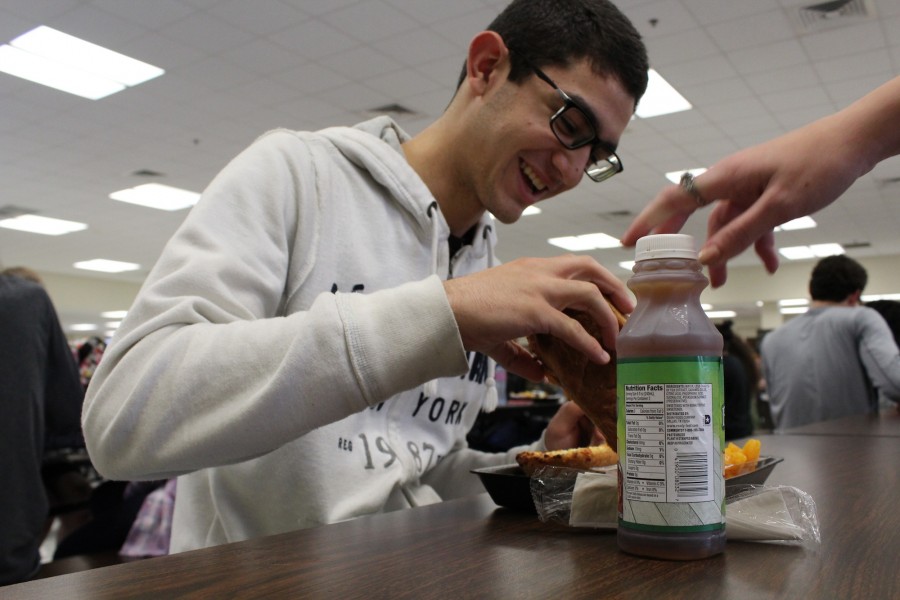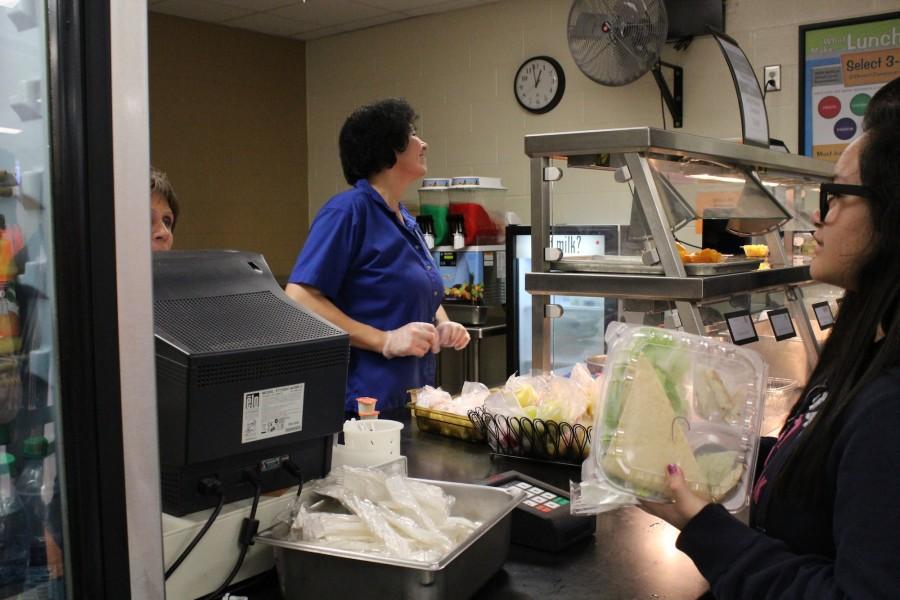Lunch time: Everything that goes into producing a nutritious school meal
Asif Edrish makes sure all cafeteria staff members perform to the best of their abilities, especially with friendly service.
December 16, 2015
School lunch has become a major conversation starter amongst students.
Students tend to purchase food at school or bring lunch from home. Little to no thought goes into what occurs behind the scenes of school lunch.
Who makes the food? How much is made daily? Who stands in charge of making sure everything is done accordingly? These questions tend to skip over numerous minds.
Instead, they sometimes get replaced with accusations on the “poor quality” of the food. Despite these accusations, cafeteria staff members put hours of work in so students can consume meals.
Mary Wynne manages the cafeteria at Simpson Middle School. Her primary duty includes feeding all students that stand in line to receive food. Wynne says, “I need to make sure that the first student and the last student are offered the same option. This means I have to order the correct amount of food, the correct amount of food has to be cooked, and prepared, and ready for when students come through the line.”
Although she already holds other responsibilities, she spends most of her time helping her employees “prep” the food opposed to being in her office. Wynne mentions, “I am very rarely in my office. I’m mostly in the kitchen. I do help prepare the food, serve it, and cook it.”
Asif Edrish manages the cafeteria and workers here at NC.
“My primary duty as manager is to oversee service and staff members and make sure that everything goes smooth and everyone gets fed. It takes an hour to one and a half hours to prep the food for breakfast and between two and two and half hours to prep the lunch, depending on the meal,” Edrish explains.
According to Edrish, all the food prepped and served will offer over 1100 to 1150 servings for 1050-1075 students that purchase lunch in the main cafeteria. An average of 400-425 students are served in the freshman academy regularly.
In 2010, President Barack Obama signed the Healthy, Hunger-Free Kids Act into law. This act authorizes funding and sets policy for USDA’s core nutrition program for children in schools nationwide.
“It has negatively impacted participation of purchasing lunch at my school,” Wynne said. “We went from serving an average of between 600-700 lunches to 350-380 per day. This is significant as we have 900 students at Simpson. This also negatively affects hours of work for myself and employees.”
Similar results show up at NC due to the act. “Student participation has been lower. Student’s don’t necessarily like it but it’s a process,” Edrish said.

Ricky Medina smiles as he enjoys his school lunch with friends. Medina commented, “I buy school lunch every day and I’m quite happy with the amount I get.”
The act enforced better nutritional aspects of the food, such as lower amounts of sodium and calories. While managers do have a say in the effects of the act, their suggestions must go through the central office, all the way up to the FDA.
“We [managers] have little say on the act. I am a supporter but it needs improvements,” Wynne said. She wishes for school lunches to have a positive reaction by students and teachers. The USDA regulates all food being served and must meet their standards before being eligible.
“The condiments contain a lot of sodium. And ketchup and other condiments have sugar in it, and they want to cut down on those intakes,” Edrish said.
This explains why so few condiments are allowed for students. Edrish and Wynne agree that they both work hard in order to create a positive cafeteria environment.
Edrish arrives at school before 6 A.M. and leaves NC, depending on the amount of work, anywhere between 4 to 5 PM. The hours put in and the hard work done result in the supplement of nutrients the students need.
“We are a small part of the day for many students and teachers, but we want all to be well-fed and satisfied with their service and food they receive,” Wynne said.


















